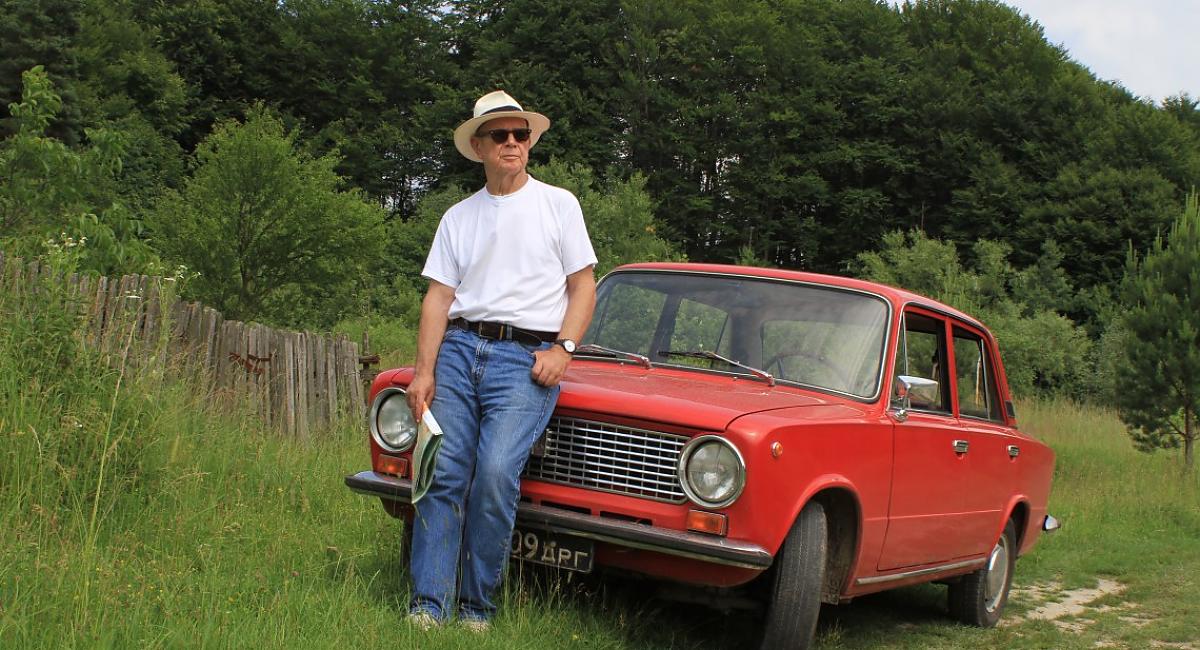Story
The two filmmakers Björn Kölz and Gernot Stadler have accompanied the Austrian writer Martin Pollack on his travels in many Eastern European countries, in Austria and Slovenia and shot a film portrait of this pioneer of documentary literature.
The TV documentary accompanies the author from Upper Austria to the scenes of his literary work. These are the eastern regions of the former Danube Monarchy, which now extend over Poland, Slovakia and Ukraine. But also the Gottschee as his country of origin and Burgenland as Martin Pollack’s place of residence and literary workshop are cinematic points of reference. In addition to the landscapes and their people, it is always the author’s books that correspond to the places visited. It is these landscapes, people and books that give us the opportunity to make current references and to understand the present through the past in a much better way.
In his books, Martin Pollack always takes us to supposedly unknown places, to distant countries, to unknown landscapes, which, on closer inspection, turn out to be not so distant and unknown. And once we arrive, he confronts us with unpleasant truths that we perhaps would have preferred not to have known about. The film follows the writer in his search for traces of Czernowitz or Lemberg in Ukraine, those areas that once stood under the sceptre of the Habsburgs for a rich Polish-Jewish-German-Ukrainian cultural diversity, which was wiped out by the great totalitarianisms of the 20th century, Nazi and Soviet terror. Left behind are “contaminated landscapes”, as Martin Pollack calls it, and a country in search of its identity. Martin Pollack, too, is always on the lookout for his identity, as he says in an interview in the film, when he comes to places in Warsaw or Slovakia where his biological father, as leader of an SS-Sonderkommando, ordered executions.
In the film, however, we also meet longtime companions of Martin Pollack, who have become friends, such as the photographer Chris Niedenthal, the historian Timothy Snyder or the publisher Vasyl Dronyak. And finally, the film follows Martin Pollack to Tüffer, that almost mystical place from the stories of his grandfather, which much later turned out to be the small town of Laško in present-day Slovenia. In the 19th century, where strong nationalisms has developed between Germans and Slovenes and many people in the painful aberrations of the In the 20th century, who were once victims and then perpetrators (and vice versa), Pollack’s own painful family history begins. When Martin Pollack walks in late autumn through the Gotscheer Horn Forest in Slovenia, where his grandfather had a hunting lodge, and talks about the thousands of people who were shot here after the Second World War, it becomes clear how inseparable the history of the 20th century is interwoven with his own family history and the themes of his books inevitably intertwine.
According to Pollack in the film, he is doing archaeological work there, always in search of traces and remains and of his own origin. But they are also quite simply exciting stories that he wants to tell.




